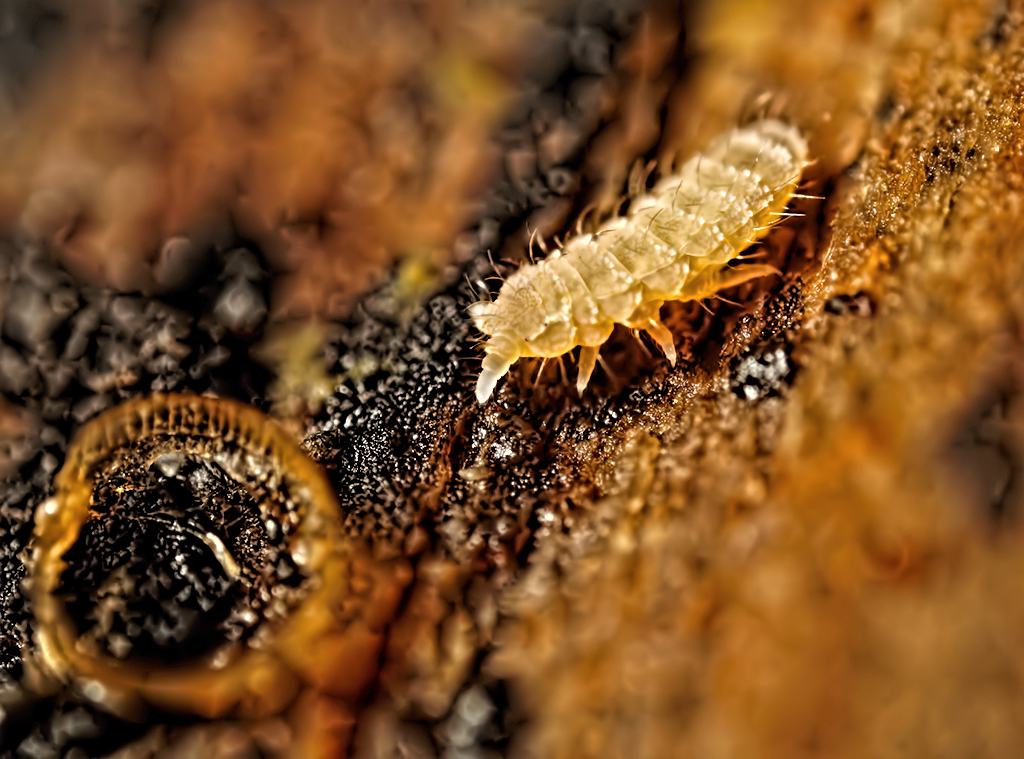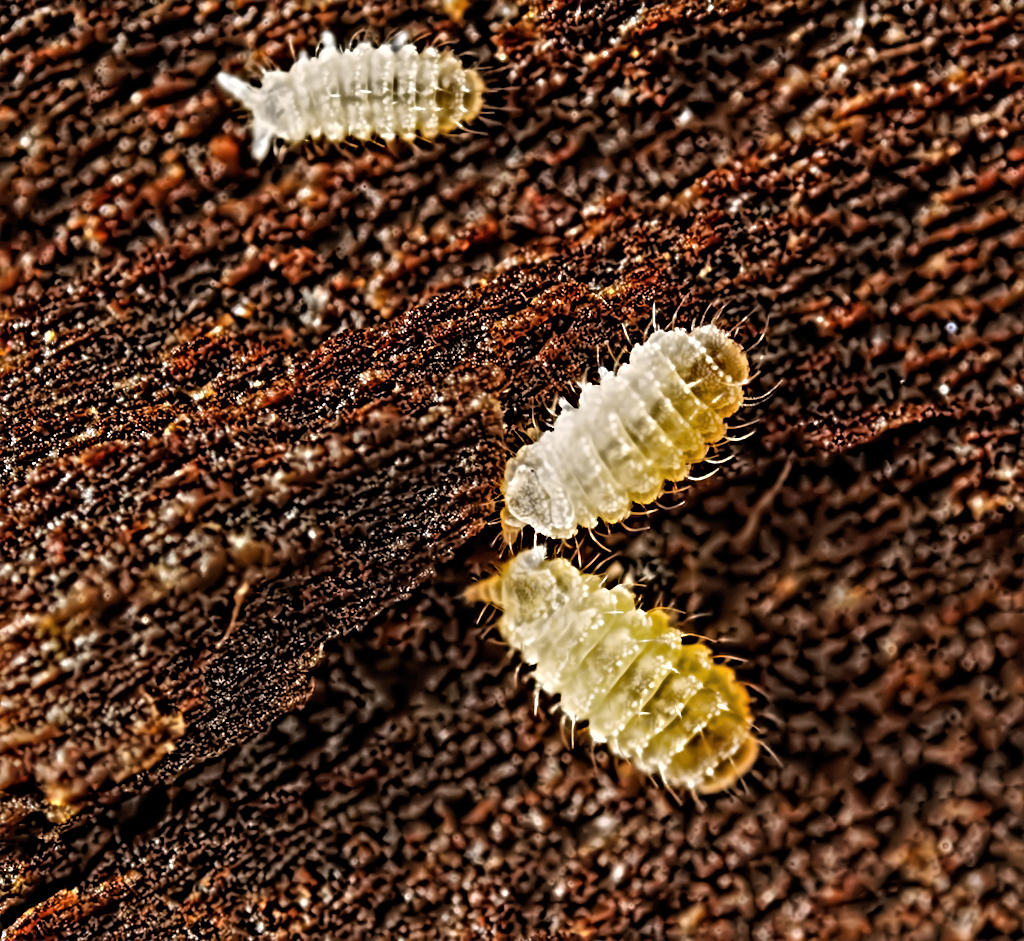Monobella grassei
This is one of the slower-moving, non-jumping Collembola. Its deep yellow to orange colour identifies it, together with its plumpness, the coarse granulation of the skin and some of the longer body hairs. The immatures are much paler. There are two, tiny, faintly-marked eyes on each side of the head, one much further back that the other. (See second image).
These were on the underside of some apple bark. The bark had been peeling from a dead apple tree for many months but had only recently been torn off by very strong winds and deposited on nearby, rough grass. The large, circular object in the bottom left of the second image is the remains of the base of a long-dead twig.
I found it two years ago on rotting logs. The images I found then were with different optics and were not so good.
https://www.fredmiranda.com/forum/topic/1516502/#14245993
Working at such high (but varied) magification (FOV typically 5mm wide) gives little DOF, even at nominal f11 or f16.
Some of these were with twin flash some with single. Getting light on the subject with the lens working distance around 20mm precluded using my usual three guns. Turning a piece of detached bark to keep up with the constantly-walking subjects and relocating them in the frame, added difficulty. So the sessions were long.
Olympus EM-1 (manual mode), Leitz Wetzlar Photar 25mm f2.5 macro at f11 or f16, single or twin TTL flash, hand-held with support.
Harold




A half-grown one.

Very immatute ones
Comments
Excellent series.
Paul.
Link to my personal website: http://www.pauliddon.co.uk
Thanks, Paul.
It should get a bit better. I found the second set, which are better.
Harold